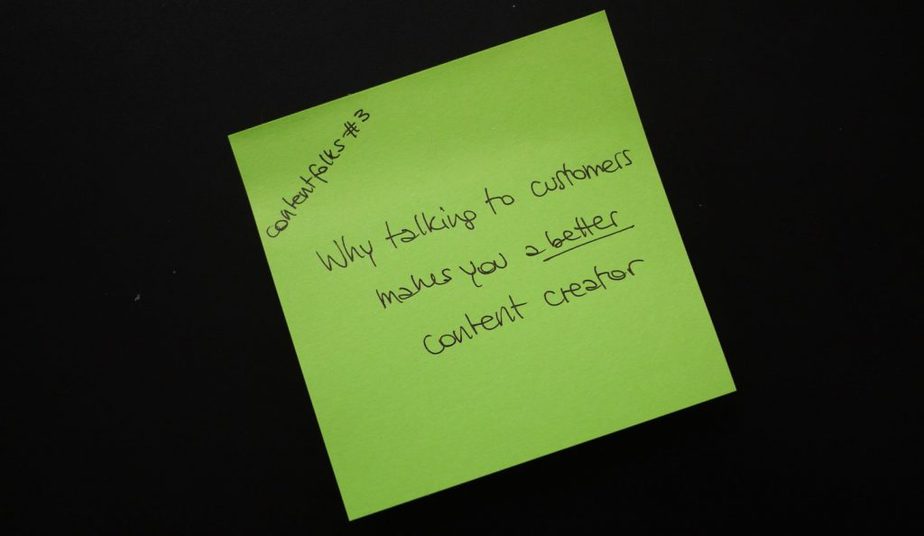
Welcome to contentfolks—a fortnightly newsletter with short lessons & ideas about content that makes a difference, sparks action, and truly serves its audience. Thank you for being here!
Hey there 👋
At some point in your life as a content maker/marketer, someone will say to you: “when it comes to marketing, you are not your customer.”
99.5% of the time, they will be right—and this has important implications for how you think about creating content.
Abstract knowledge vs. real customers
When I joined Hotjar in 2017, I had been a Hotjar customer for ~2 and 1/2 years. That gave me a huge competitive advantage because I knew the product inside out and I could keep myself in mind as a target audience when creating content about it 😎
But that was a very lucky exception! The most common scenario is usually something more like this: you work for a company whose product(s) you know and understand but may not use yourself,* and you have a general notion of your target customers and their main pain points and desires.
The problem: knowing this in the abstract doesn’t enable you to create the most useful, enjoyable, and/or effective content for the real people you’re trying to reach.
*quick anecdote to illustrate the point: back in 2015, I was working on a consulting project at Prada and discovered a ~£7,000 bag in their online shop. FYI, the most I’ve ever spent on a bag is somewhere around the £15 mark—so while I know what bags are and have an abstract grasp of the typical Prada customer, I have z-e-r-o clue what’s going on in someone’s mind as they consider a bag that was 4x my monthly salary at the time. Do they care about colour? Are they swayed by materials? Does shape matter? 🤷♀️

So you’re not the customer.
Now what?
Back to our original point. What are you, a content creator, to do when something like this happens—that is, when you want to do a great job BUT you don’t have first-hand experience of the product and don’t know what will resonate (or not) with customers?
You talk to them.
It’s simple, easy, game-changing. Once you do it a few times, you’ll start wishing you had started sooner.
Let’s walk through the process.
4 steps for talking to customers
- Find 2-3 customers to reach out to
- If you work in house → ask your support and/or success team for intros: they know all the right people
- If you’re freelancing → ask the person you report to for intros (they’ll figure it out for you)
- If you want to move fast w/out involving anyone else → find someone who mentioned the product on Twitter/Facebook/LinkedIn, wrote a review etc. in the last 3 months and reach out to them yourself
- Send them a clear and straightforward request for help
- Example:
“Hey, I’m [name] and work at [place].
I want to learn more about our customers so I can serve you better. Would you share your experience in a 30-minute call?”
- Example:
- Get permission to record the call, introduce yourself (briefly! it’s their show, not yours) and start asking questions. Your goal is to build a clear sense of how and why they’re using the product/service you want to create content about
- Transcribe the call, store the transcript, revisit often. The more transcripts you collect, the more you can cross-reference and mine them for useful information
💡 A practical example 💡
Here are some of my go-to questions that work fantastically whenever I am on calls with a customer. Steal them—I mean it!
I use them to understand more about what people think about the product, what kind of help they need with it, and how to create content that addresses specific pain points or targets a potential customer’s needs:
- When/where did you first hear about [product]?
- What problem/s were you facing when you first looked for [product]?
- What attracted you about [product]?
- What objections did you have when considering [product]?
- What convinced you to give [product] a try?
- What does your day look like? How does [product] fit into it?
- How do you describe [product] to your colleagues?
- What can you do after getting [product] that you could not before?
- How do you feel now that [product] is in your life?
- What challenges do you still have with [product]?
- If you could change ONE thing about [product], what would it be?
- If you could no longer use [product], what would you do?
💡 Pro tip: you don’t have to go through all of these questions, and certainly not in that order, either. Be curious: if you get an answer worth digging into, ditch all other questions and stay with it.
It takes this little to be a better content creator. I swear by this method: if it was up to me, it would be mandatory for all marketing teams.
Will you give it a try? 🙌

📧 PS: if you want to get to get this content as a fortnightly email,
click here and sign up on Substack 📧